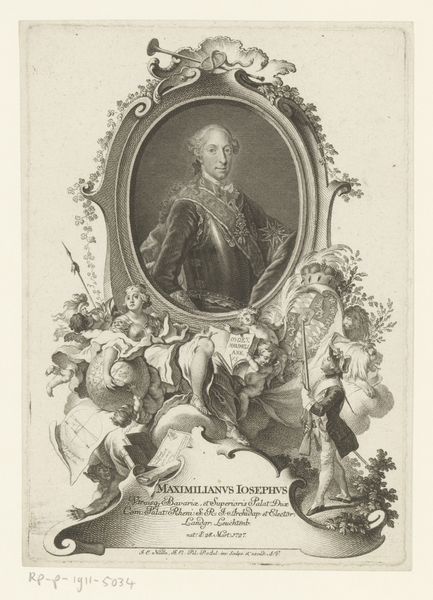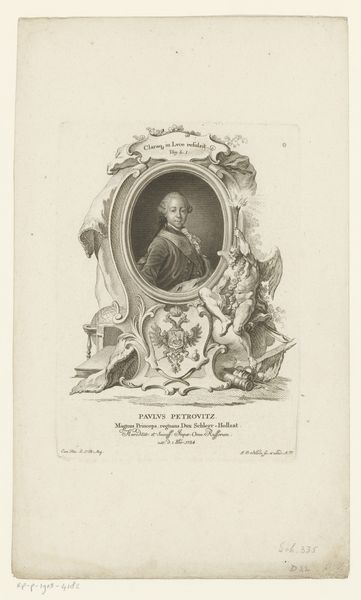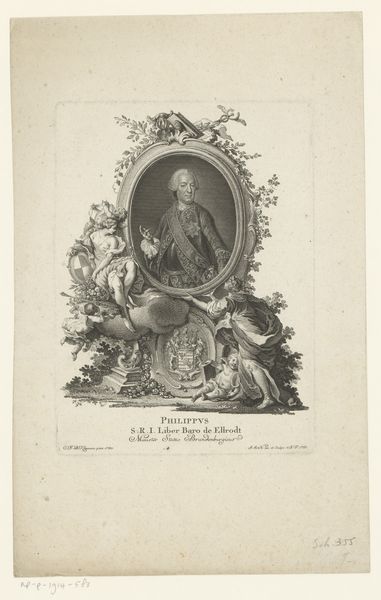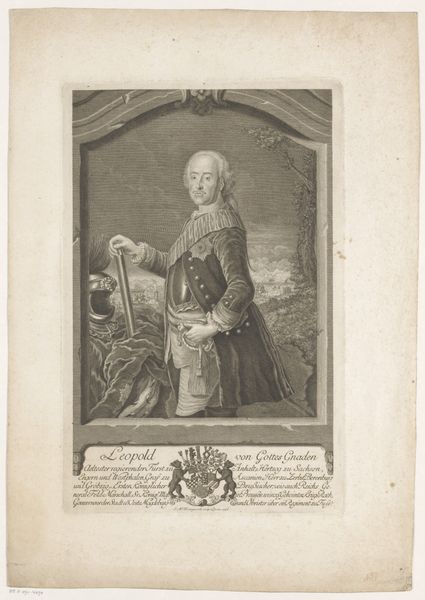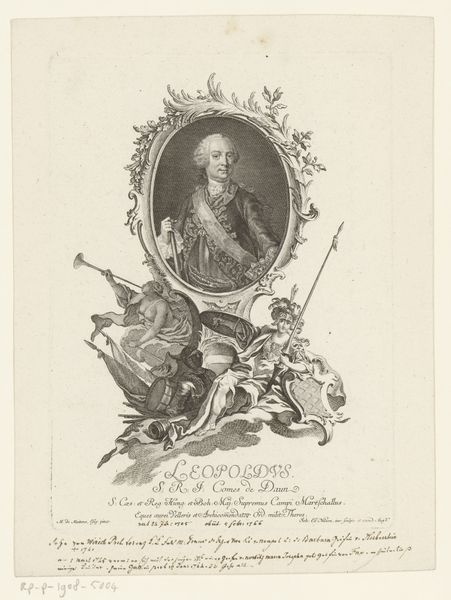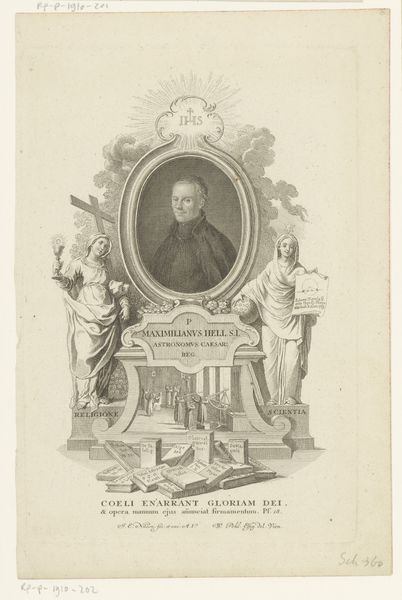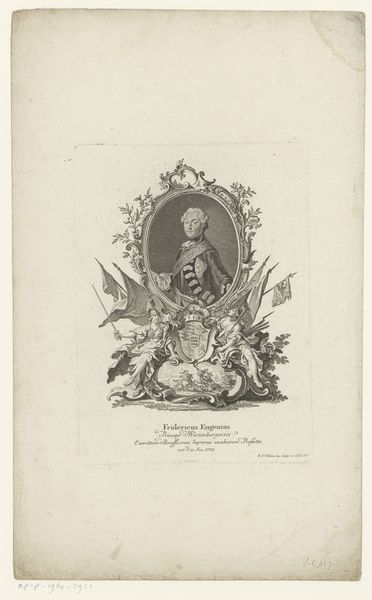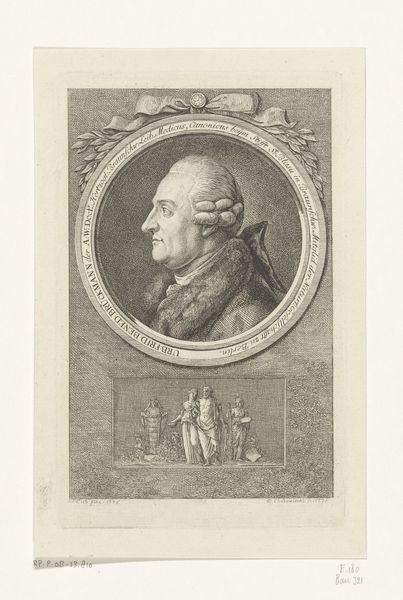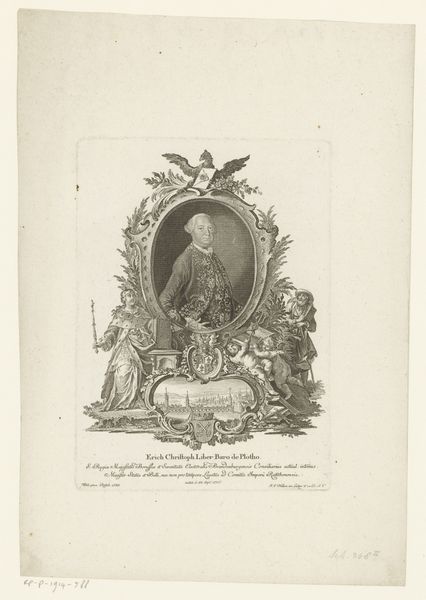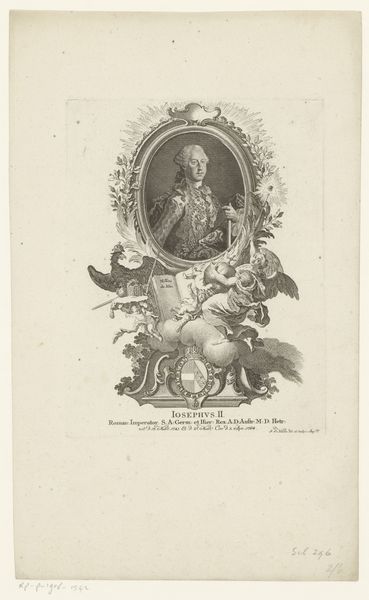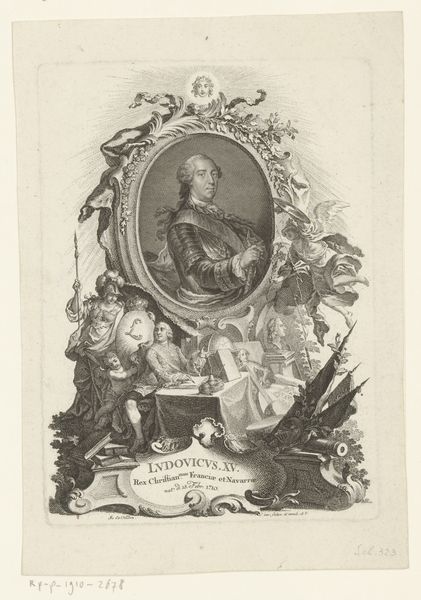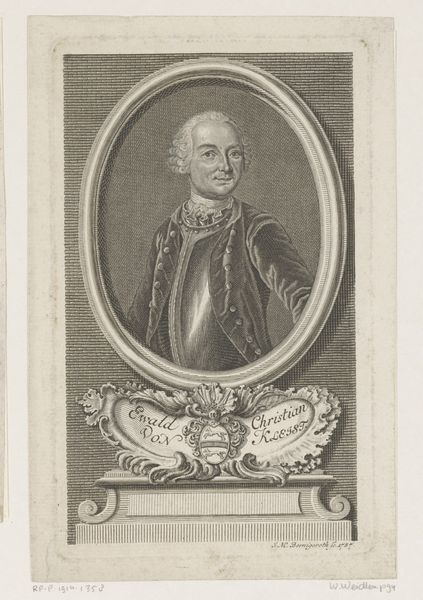
engraving
#
portrait
#
neoclacissism
#
old engraving style
#
caricature
#
history-painting
#
academic-art
#
engraving
Dimensions: height 230 mm, width 184 mm
Copyright: Rijks Museum: Open Domain
Curator: Look closely at this print titled "Portret van Antonio Barceló," made in 1783 by Juan (III) Muntaner. It's an engraving that beautifully captures a sense of neoclassicism and academic style. Editor: Oh, my first impression is one of playful seriousness. The man in the portrait has this very stern, official look, but then he's surrounded by all these rather theatrical props, figures, and defeated enemies! It feels like a stage set. Curator: Precisely! Note the allegorical figure of Spain, armed, standing triumphantly over a defeated foe, all flanking the central portrait. Consider the intent to immortalize Barceló. It speaks volumes about 18th-century concepts of heroism and the performance of power. Editor: Absolutely! And the oval frame adorned with inscriptions adds to this effect. There is even a little landscape sketched in beneath them! To me, the image is as much about celebrating Spain's authority and empire as about the man himself. I detect an ironic humor about it too; as if the artist acknowledges some pomp in Barcelo's portrait. Curator: It’s fascinating how they combined portraiture with symbolic elements to create layers of meaning. Anchors, cannons, flags all signify naval power and military strength, recurring emblems within history painting. Editor: It’s visually very busy. A whole heroic opera crammed into a small etching. I am wondering; is it too much to question the artist's opinion? Did they mean to amplify the pomp with every additional accessory and flourish? The work hovers between honoring Barceló and quietly poking fun at all of it. Curator: Perhaps that ambiguity reflects the transitional era; a clash of Enlightenment ideals with lingering traditions. Consider this engraving’s place among portraiture conventions, a visual manifestation of someone’s status during a moment of societal change. It represents collective memory more than only commemorating Antonio Barceló as an individual. Editor: It definitely gives me pause. I can see it might function as a record, something solid, permanent... yet also hints at something mutable, uncertain, as you suggested, underneath. Well, it gave me plenty to think about!
Comments
No comments
Be the first to comment and join the conversation on the ultimate creative platform.
